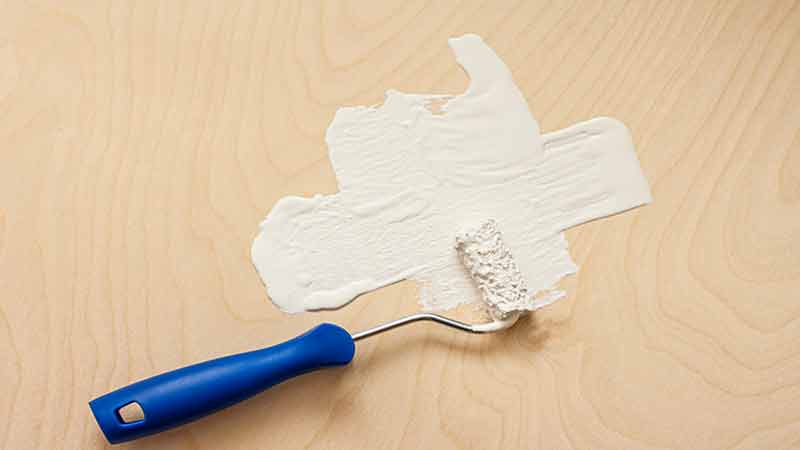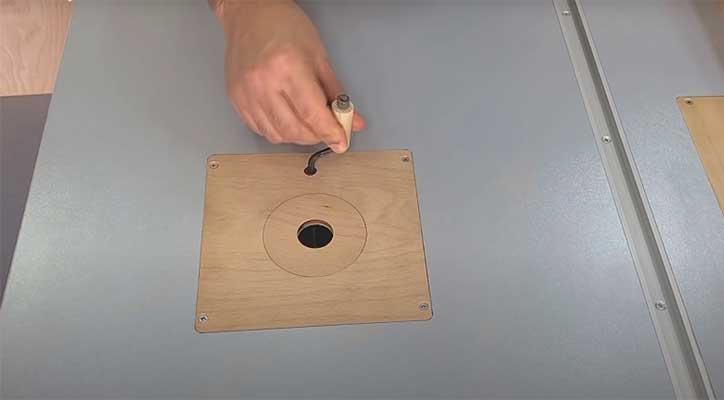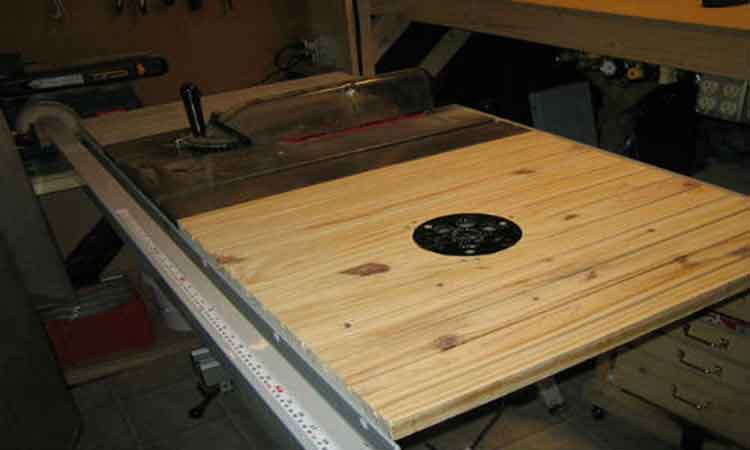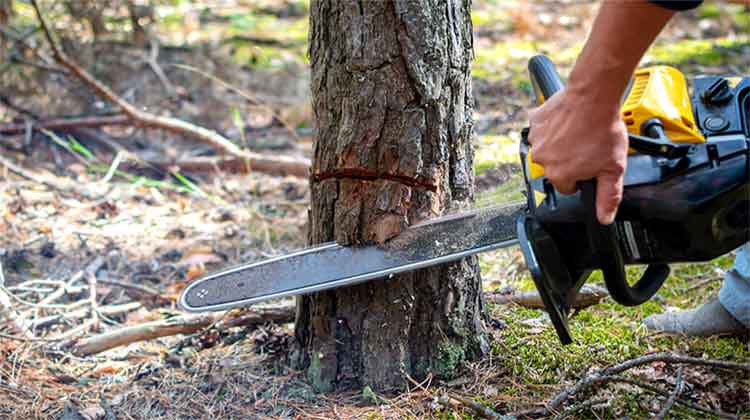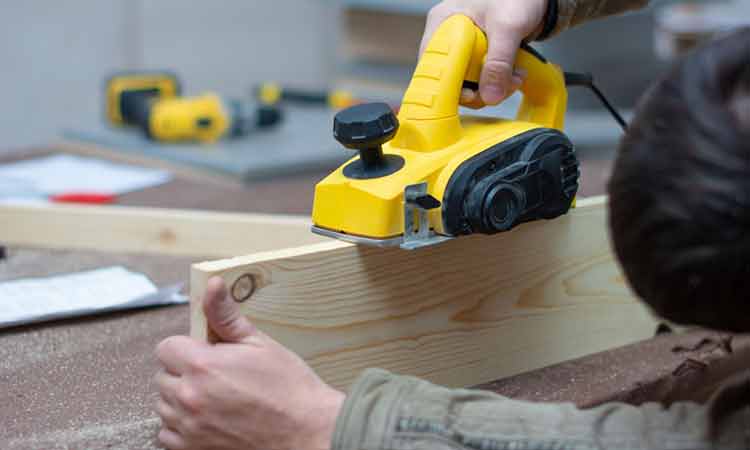The appearance of plywood is a breakthrough in woodworking industry, for a new type of industrial wood. Despite the shorter lifespan than natural types, plywood is becoming the top priority of many house designers and wood consumers.
Thanks to great advantages plywood brings, choosing plywood for house, apartment and building constructions has been a hot trend during the last ten years, especially in the field of painting its surface. To go into details, this article is to tell you how to paint plywood surface for the best and smoothest color.
Different Types Of Plywood Surfaces
The fact is that there is a wide variety of plywood to select, with diverse plywood thickness, basic color and plate sizes. As the painting work depends a lot on these listed factors, it is extremely necessary to understand your plywood materials. Here are several surface types.
1. Melamine Plywood
Melamine is kind of synthetic plastic and pretty thin. It’s only 0.4 – 1 zem, coated with an okal or MDF layer. After the last process, Melamine plywood’s thickness reaches 18 – 25 mm and a normal plate is sized 1220×2440 or 1830×2440 (mm).
The surface of a Melamine plywood plate has bright color and users sometimes don’t need to paint it more. The wood is suitable for office and hotel designing. With a brand – new Melamine plywood plate or even plywood gusset plate design, painting is possible and even super – easy by dint of its smooth fiber and polymorphism of grains.
However, this plywood is nearly the thinnest so it’s much better to leave just a thin paint layer and drying it should be fast in order to avoid soaked paint into every wood fiber.
2. Laminate Plywood
At the first sight, Laminate plywood sheets have many things in common with the previous type. Nonetheless, it’s a little thicker and it’s possible to bend a Laminate surface with post – performing technology.
Laminate plywood is utilized the most in making plywood cabinets and shelves in the kitchen, in the meeting room and multi – functional rooms. Because it can be bent easily, the paint layer above shouldn’t be fragile. I often see the paint line be broken when the wood plate is bent; hence, painting needs more carefulness and moderate painting speed.
3. Veneer Plywood
For veneer surface, painting must be the care fullest on the grounds that after being processed to eliminate bark and heartwood, veneer plates are glued together. An okal layer is made the foundation.
Veneer plywood is much favored in the field of construction by virtue of its low cost and flexible in designing.
With the natural color of these plywood types, the designs are absolutely good – looking but the demands of users are still rising, for stranger and more attractive tones. Understanding the features of each surface will be a guide to how to paint plywood materials.
Main Steps To Paint Plywood
Now, let’s look at the following steps to paint the plywood and make it the smoothest wood plate.
Step 1: Clean the plywood surface once again
After the delivery and storage for a long time, the plywood, certainly, has absorbed much dust, dirt and some wood residue may be detached from the wood block on the surface. If you intend to repaint furniture, clean plywood cabinets, doors, walls … thoroughly. To have a smooth paint layer, you will need to remove all the rough residue and dirt on it. Remember to:
- Get a dustpan brush for dust removing
- Sweep the debris in straight lines (according to the wood grain)
- Use a dry soft towel to get the last dirt
Step 2: Sand the surface if needed
For the rough surface, sanding with a hand sander machine is vital. It’s impossible to smooth the plywood with your hands or scissors. Sanding is surely useful before apply paint on it. If you make use of old plates with a glue layer above then sanding plywood for painting will be indispensable.
Sander is more professional but to save the money, conducting on tiny plywood plates, working with some sandpaper is productive. Try to sand plywood edges. Please note that driving the sander on straight lines will decide how smooth the wood surface will be.
Step 3: Choose and mix paint
Selecting the best suitable paint for plywood is quite difficult as it’s much related the paint durability and smoothness. There are some kinds of paint to choose like:
- Oil paints
- Water paints
- Plastic paints
- Cement paints
- Coal tar or cellulose paints
Ensure the paint kinds are well – stuck to the plywood. The wrong paint will easily get out of the surface with just a scratch. Next, mix the paint to create the tone you aim at. You can divide the ratio of paint colors and water but the real result requires trial on a hard piece of paper.
Step 4: All things are well – prepared
When everything is ready for painting plywood, please check once more time and ensure:
- Plywood surface is free of dust
- Guarantee the smoothness and cleanliness
- Guarantee the transparency of paint color
- Display all the tools: paint roller/ paintbrush, gloves, masks and ready hands
Step 5: Paint in 3 sections
Now, we’ll help you realize how to paint plywood objects in an effective process. For the best paint color, remember to paint in 3 sections to ensure the equal tone and paint density. 3 sections are below.
Section 1: Sink the roller into the paint and the tone is always the darkest at the beginning. Don’t be hurried to roll the roller on the plywood immediately but to wait until the paint stops dropping when you raise the roller. After that, roll with a short line to get acquainted and to adjust your painting speed.
Section 2: This is the main section so try to speed up rolling and don’t let the roller deviate from your hands. In section 2, long lines are preferred.
Section 3: Paint the edges and the surrounding. When painting, the center is always full of paint but the edges may be blur. Thus, you had better check the edge and surrounding. Make sure that the paint looks equal at every point on the surface.
Conclusion
It requires carefulness when you paint plywood floors or plywood furniture. The paint of high quality and the completely dry plywood will make painting easy. Don’t miss any stage to have a more attractive plywood surface.

